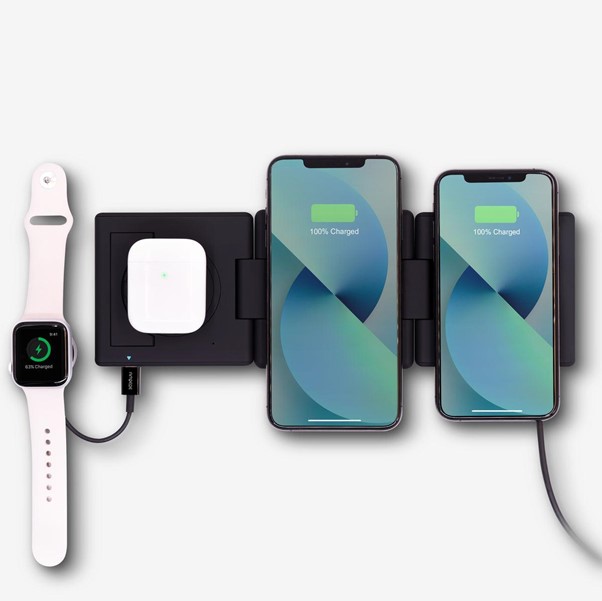Wireless charging has become increasingly popular in recent years, as more and more devices are equipped with them. However, there are a number of different wireless charging standards on the market, which can lead to confusion and incompatibility issues. One of the most popular wireless charging is VN88 Rezence, which was developed by Alliance for Wireless Power (A4WP). In this article, we’ll explore how the Rezence wireless charging standards impact interoperability and what this means for consumers and manufacturers.
Understanding VN88 Rezence Wireless Charging
What is VN88 Rezence?
VN88 Rezence is a wireless charging standard developed by the Alliance for Wireless Power (A4WP). It is based on the Qi standard, which is used by many smartphones and other devices, but offers a number of advantages over Qi, including longer range and faster charging speeds.
How Does VN88 Rezence Work?
VN88 uses magnetic resonance technology to transfer power from a charging station to a device. This technology allows for charging at greater distances and with more efficiency than traditional inductive charging methods.
Advantages of VN88 Rezence
Some of the key advantages of Rezence include:
- Longer range: Rezence chargers can charge devices from a distance of up to 40 centimeters, compared to Qi chargers which can only charge from up to 4 centimeters away.
- Faster charging speeds: Rezence chargers can charge devices at speeds of up to 15 watts, while Qi chargers are limited to 5 watts.
- More efficient: Rezence chargers are more energy-efficient than Qi chargers, wasting less energy and charging devices more quickly.
- Interoperability: Rezence chargers can charge any device equipped with a Rezence receiver, regardless of the manufacturer.
Interoperability and the Rezence Standard
What is Interoperability?
Interoperability refers to the ability of different devices and systems to work together seamlessly. In the context of wireless charging, interoperability means that a charging station from one manufacturer can charge a device from another manufacturer, as long as they both support the same wireless charging standard.
The Importance of Interoperability
Interoperability is crucial in the world of wireless charging because it eliminates the need for consumers to purchase different chargers for different devices. It also makes it easier to charge devices in public places, as any compatible device can be charged on any compatible charging station.
Rezence and Interoperability
One of the key features of the Rezence wireless charging standard is its emphasis on interoperability. Rezence chargers can be used to charge any device that is equipped with a Rezence receiver, regardless of the manufacturer. This is made possible by the use of a common protocol that ensures Rezence chargers and receivers can communicate with each other and negotiate the best possible charging conditions.
Impact of Rezence on the User Experience
Convenience and Flexibility
The interoperability of Rezence wireless charging standards has a significant impact on the user experience. With Rezence, users can charge any device that is equipped with a Rezence receiver, regardless of the manufacturer. This eliminates the need to purchase different chargers for different devices, and it makes it easier to charge devices in public places.
Improved Charging Speeds and Range
In addition to interoperability, Rezence also offers faster charging speeds and longer range than other wireless charging standards. This means that users can charge their devices more quickly and from greater distances, improving the overall charging experience.
Compatibility Across Devices
Another benefit of Rezence’s interoperability is that users can charge a wide range of devices using the same charging station. This includes smartphones, tablets, laptops, and other devices that are equipped with a Rezence receiver.
Read Also: German Cup: Boniface Returns As Leverkusen Thrash Dusseldorf To Reach Final
Impact of Rezence on the Industry
Encouraging Innovation
The interoperability of Rezence also has a positive impact on the development of wireless charging technology. By providing a common standard, Rezence makes it easier for manufacturers to develop new wireless charging products. This leads to increased competition and innovation, which ultimately benefits consumers.
Adoption by Manufacturers
Many major manufacturers, including Samsung, LG, and Dell, have adopted the Rezence wireless charging standard. This widespread adoption is a testament to the benefits of the standard and its impact on interoperability.
Collaboration and Standardization
The Alliance for Wireless Power (A4WP), which developed the Rezence standard, is a collaborative effort between several companies and organizations. This collaboration has helped to ensure that the standard is widely adopted and that it continues to evolve to meet the changing needs of the industry.
Challenges and Limitations of Rezence
Competing Standards
While Rezence is a popular wireless charging standard, it is not the only one on the market. Other standards, such as Qi and PMA, are also widely used, which can lead to compatibility issues and confusion for consumers.
Adoption and Infrastructure
Although many manufacturers have adopted Rezence, the availability of Rezence charging stations in public places is still relatively limited. This can make it difficult for users to take full advantage of the interoperability benefits of the standard.
Cost and Implementation
Implementing Rezence wireless charging technology can be costly for manufacturers, which may slow down the adoption of the standard. Additionally, there may be technical challenges involved in integrating Rezence receivers into different types of devices.
Conclusion
The VN88 Rezence wireless charging standard has had a significant impact on interoperability in the world of wireless charging. By providing a common protocol and emphasizing interoperability, Rezence has made it easier for users to charge their devices and for manufacturers to develop new wireless charging products.
The interoperability of Rezence has led to a number of benefits for users, including increased convenience, flexibility, and improved charging speeds and range. It has also encouraged innovation and collaboration within the industry, as manufacturers work together to develop and adopt the standard.
While there are still challenges and limitations to overcome, such as competing standards and the need for wider adoption and infrastructure, the impact of Rezence on interoperability cannot be overstated. As wireless charging technology continues to evolve, the Rezence standard will likely play a crucial role in shaping the future of this increasingly important technology.
Got what it Takes?
Predict and Win Millions Now












